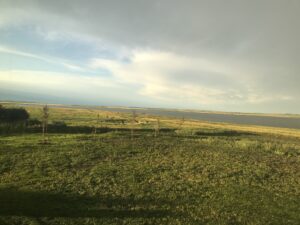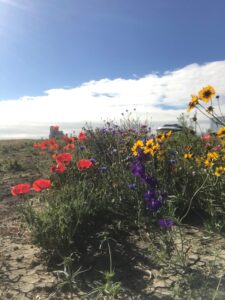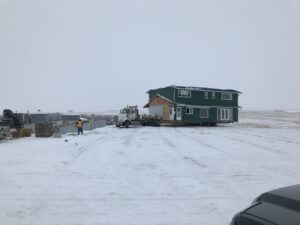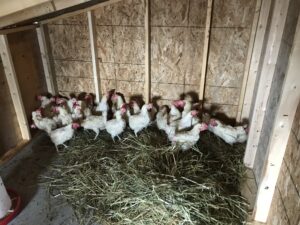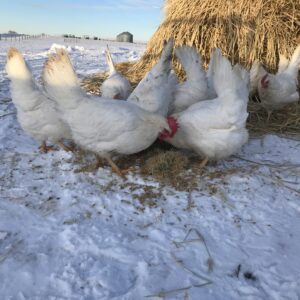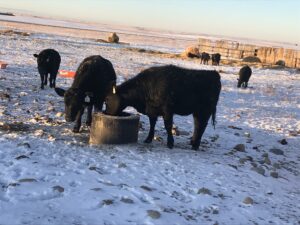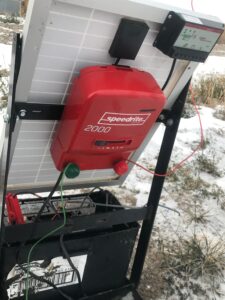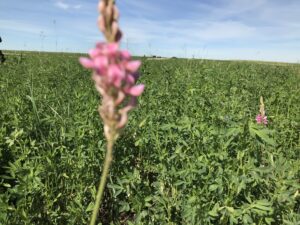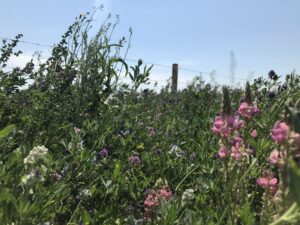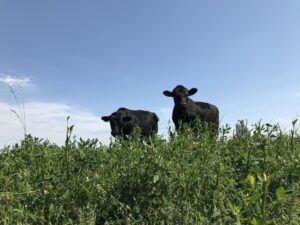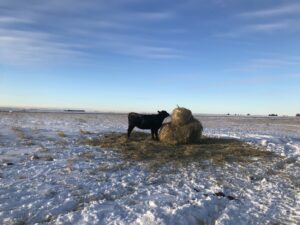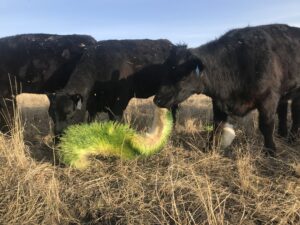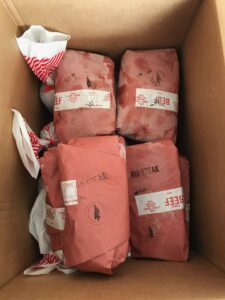Sustainability is the idea of doing things ways that leave things as good as they are. Regeneration means leaving things better than you found them. Nature has a way of healing itself if given the right conditions, people can heal, and so can ecosystems. Sometimes we just need to get out of the way.
Here at South Fort we are trying to do things in ways that work today, and will continue to work, and hopefully work even better, for a lot of tomorrows.
Here are some of the ideas we are using:
Shelterbelts
We are planting trees that will help reduce windspeed, catch snow and provide habitat for many different creatures. Slower wind means less soil erosion, cooler ground temperatures in the summer and less drying winds. The trees around our house will eventually protect it from storms, and reduce our heat consumption. We are using trees and shrubs that each have their own benefits. Some of the poplar trees we plant grow very quickly, some fruit bearing shrubs provide food for us and for our natural neighbours, some of the trees are flowering for bees and hummingbirds, and all of them are just plain beautiful.
Flower gardens
Our wildflower gardens give a great place to feed for bees and other insects. They are beautiful, provide continuous cover and are easy on water compared to lawn grass.
House
Our house may not look like a traditional prairie house, because it isn’t. It is city born and bred, starting out overlooking the Glenmore Reservoir in Calgary, but it likes the fresh air and views it has now. It could have been destined for a landfill because the owners of the property wanted something new. We were able to move it out here, and plan to enjoy it for decades to come.
Rain catching
This is an oldie but a goodie. Rain collected off the house and buildings is saved to water the gardens. The more rain we can capture and use, the less we have to draw on our aquifer, and the more it can recharge. Also, collecting the runoff means it isn’t free to erode soil, and that we can use our landscaping to minimize the amount of hardscape we need to maintain.
“Recycled” Chickens
Big, commercial egg farms need chickens that lay 98 days out of a hundred. We don’t, what ever they can give is plenty for us. We sourced these chickens that were no longer of use to such a farm, and put them on a diet of fodder and gave them the freedom to roam outside as they please. We have watched them grow feathers back, learn to forage, make nests, hide eggs and hunt mice and snakes. I believe the second half of their lives is better than the first.
Cobett waterer
This waterer uses ground heat to keep from freezing. It has a long tube beneath it that acts like a man hole in a city street. The heat from deep in the earth travels up the hole and heats the water from the bottom. This means we don’t use any other power to thaw water, which cuts down on CO2 emissions and operating costs. Sometimes, if there is a cold wind and it isn’t being used heavily the water freezes a little on top, in which case we go and break the ice. It is harder to install and more money up front, but we think it’s worth it.
Solar powered electric fence
This energizer collects solar power which can be stored in a battery, and used to run an electric fence. It is light, easy to move, temporary, and allows for many configurations. This type of fence is perfect for rotational grazing applications. It doesn’t work well when its covered in snow and the days are short, so we plan accordingly.
Rotational Grazing
During the summer months we move our cattle from one small paddock to the next. This high pressure, low time grazing is very good for the perennial grasses and plants because they are given the rest they need to grow vigorously and the encouragement they need to root deeply. The high pressure helps the soil by pushing trash from plants down into it. The cattle’s hooves press in and dent up the soil, easing compaction and allowing water channels to get in . This gives the soil a lot of organic matter that the micro organisms love. Organic matter in the soil is carbon sequestration at its finest. Also, the nutrients from manure are spread over the entire field. The cattle are able to eat one entire section before moving to the next, which encourages them to eat all of the plants there, not pick out only their favourites.
We use the same idea for our cattle, pigs and chickens, but the smaller critters move right in their pens. Doing all of this moving gets us up close and personal with our livestock. For us, that feels good for the soul. It is fun to watch the regrowth after moving the chickens and pigs. You can tell exactly where they have been leaving their fertilizer.
Multi Species Perennial Pastures
Using a multi species seed mix to grow our forage means better biodiversity which gives us the advantages of many different plants. Alfalfa fixes nitrogen in the soil, meadow brome retains protein and quality late in the year, rye grass can grow quickly and provide shade for the soil and roots of other plants. Polyculture stands often have something quick growing, with other varieties maturing at different times through out the year. Varieties can also differ in the amount water, temperature and other variables they like, so every year something should be happy and doing well. These types of crops are also beneficial for wild critters like bees, butterflies, rabbits and birds.
Riparian Area Care
Another use for the electric fence is keeping the cattle out of riparian areas (wetlands) during wet times. Manure is an important source of nutrients for the soil, but can become problematic if it is too concentrated. Leaving flat or grassed areas around waterbodies helps keep manure out of the water, keeping it clean and leaving the manure on the grass where it is helpful. Also, cattle can be tough on banks of water bodies when it’s wet. Allowing vegetation the time it needs to absorb water and help hold the soil prevents erosion.
Bale Grazing
During winter months we stage bales in our field many at a time, and open them as the cattle are ready for them. Again, this spreads nutrients over most of the pasture. Another bonus is that we only have to start the tractor occasionally during the winter, unlike operations where they are using heavy equipment to feed everyday. Cattle need some dry matter to munch on to help their digestion.
Feeding Fodder
Environmental impacts are that we need to haul a fraction of the amount of barley as compared to feeding them straight or milled grain. They consume less hay, because most of their nutritional needs are met through the fodder. So that’s keeping time off of a tractor, baler, truck, loader, etc, all of which reduces carbon footprint. Then there’s the water side. It takes about only 2% of the water it would take to grow a similar amount of forage outside. Really, one needs much less land to grow a similar amount of animals. This means we don’t have to do things like disc up and drain sloughs and plow trees over to gain a few acres.
Recyclable or compostable packaging
We use paper to wrap our products if it won’t affect the quality.
